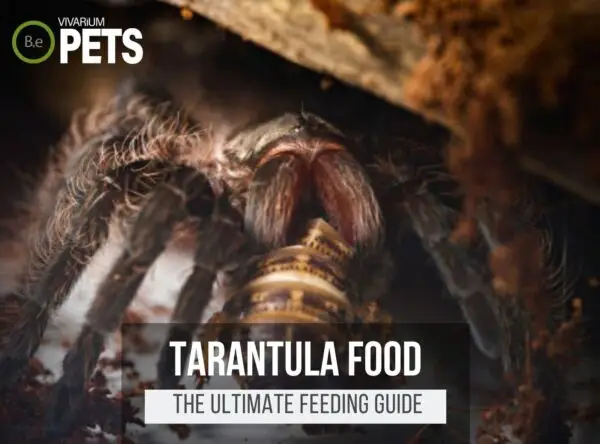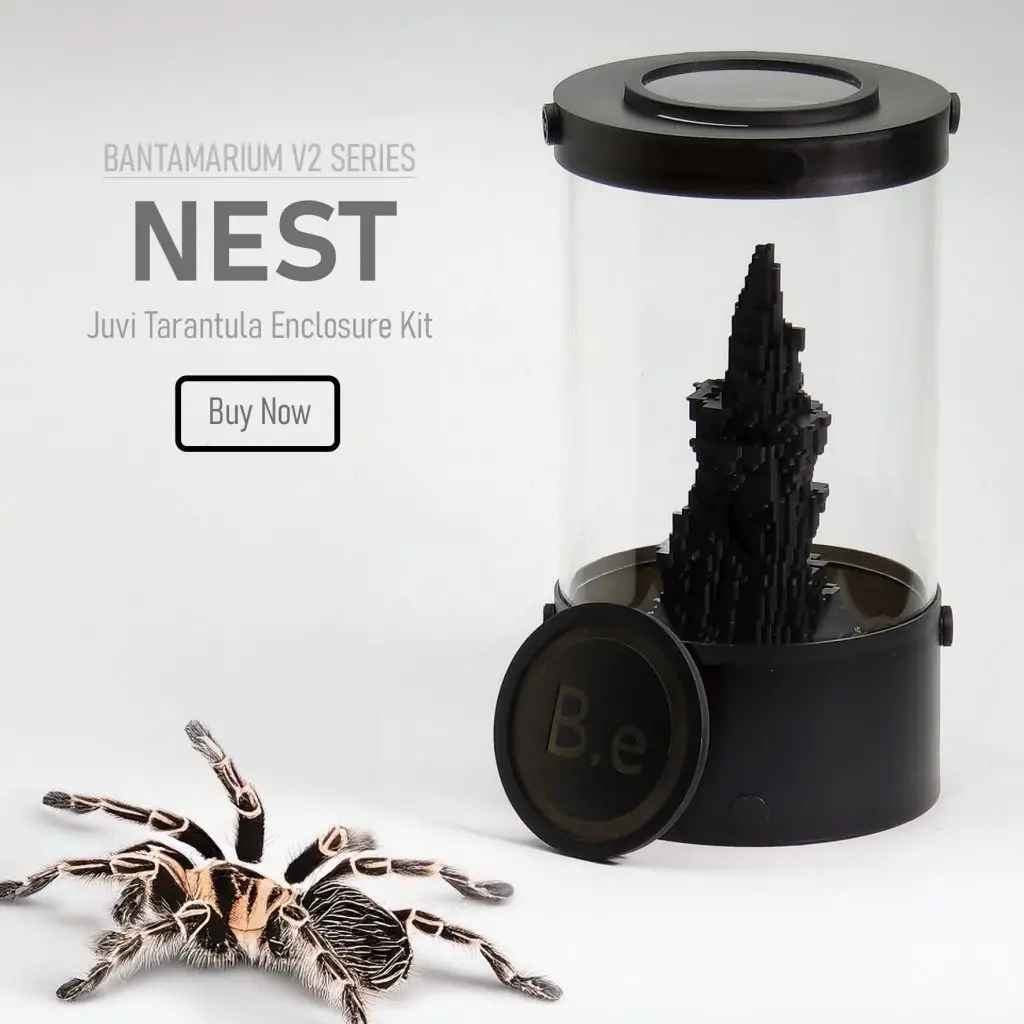Tarantulas seem to come from another world with their spindly legs and cloaked bodies… Considering what tarantula food is best for new owners can be just as alien if you’re used to feeding more traditional pets.
If you are interested in owning a tarantula but don’t where to start with their diet, then this article is for you!
In this hands-on food guide, we will cover things like what tarantulas eat, how to feed them, and some common mistakes to avoid.
So, if you want to learn more about feeding your tarantula, read on!
Table Of Contents:
ToggleWhat Do Tarantulas Eat?
In the wild, tarantulas feed on a wide variety of small insects, such as crickets, millipedes, and grasshoppers.
They also like to eat any other small animals they can catch as well.
In captivity, tarantulas still require a diet based mainly on insects.
Gut-loaded bugs such as crickets, roaches, and various types of worms are all great choices.
You can also provide other types of food, such as fruit flies and larvae, and soft-bodied vertebrates like mice depending on the tarantula’s size.
Create the perfect home for your arachnid with our Customizable Spider Enclosure Kits, designed to meet all their habitat needs.
Buy Tarantula Food
Live food is a great option if you want to give your tarantula the most nutritionally complete diet.
Feeding live critters also gives your tarantula some fun mental stimulation as they use their natural predatory instincts to catch and eat their dinner.
Live foods you can buy include dubia roaches, hornworms, fruit flies, superworms, silkworms, and black soldier fly larvae.
Be sure to only buy foods that are specifically made for tarantulas to avoid any potential adverse reactions.
Additionally, make sure your live food has been properly cared for, as bad quality food can carry diseases such as parasites.
How To Feed A Tarantula
This step-by-step tarantula feeding guide is an indispensable resource for those who own or are interested in caring for an exotic pet like this.


Materials:
Steps to Feeding a Tarantula
When To Feed A Tarantula
It’s important to be aware of when to feed your tarantula, as different species require different feeding schedules.
For example, young tarantulas feed more often than adults, so you may need to give them food every 2-3 days.
Adult tarantulas can usually go 7-14 days between feedings, although this depends on the species.
It’s also important to consider the season and the tarantula’s age.
During winter months, tarantulas generally eat less and can go even longer between feedings.
The best way to determine how often your tarantula should eat is to monitor their weight and activity level.
If they seem to be slowing down, you may need to start feeding them more regularly.
Ultimately, the frequency of feedings also depends on the size and health of the tarantula.
Finally, when you are ready to feed your tarantula, it’s important to remember to feed them their preferred food.
As different species of tarantulas have different dietary needs, it’s helpful to check your specific species’ care guide to determine what type of food they should be eating.
Once you’ve got the right food, careful handling is also key.
Tarantulas are delicate creatures who may become stressed or injured if handled too roughly.
With the right food, handling, and timing, you can keep your tarantula appropriately fed and full of energy!
Common Mistakes
Taking care of tarantulas can be tricky, and it’s important to know what to do and what not to do.
Some of the most common mistakes people make when feeding tarantulas include:
- Overfeeding: It may be tempting to give your tarantula extra food, but doing so can cause health problems and even shorten its lifespan.
- Not varying the diet: Like humans, tarantulas require a variety of food to stay healthy. Buying pre-made food pellets is great, but supplementing with other fresh foods often is also a good idea.
- Not providing enough nutrients: Some tarantulas are picky eaters and will feed on very small prey. Be sure to provide your tarantula with appropriate feeders that have enough nutrients to maintain health.
Conclusion
Feeding your tarantula doesn’t have to be a mystery.
Whether you opt to buy pre-made tarantula food or create your meal plan, your pet will be sure to benefit from the right meals and treats.
Keep in mind when and how often to feed them to reduce the risk of any health problems.
Above all, enjoy caring for your tarantula and take the time to bond with them on their terms.
If you follow the tips outlined in this tarantula food guide, you will be able to provide the nutrition your pet needs.
Create the ideal habitat for your arachnids with our species-specific soil mixes and Spider Enclosure Kits. These products provide everything you need for a thriving spider habitat.
Frequently Asked Questions
Tarantulas are carnivores and primarily eat insects, but larger species may also consume small mammals, lizards, and birds.
Commonly, tarantulas are fed live insects such as crickets, mealworms, and roaches.
Some tarantula keepers also feed them pre-killed prey or frozen-thawed rodents.
The frequency of feeding a tarantula depends on its species, age, and size.
In general, most tarantulas can be fed once a week or once every two weeks.
Yes, tarantulas need a shallow water dish in their enclosure to drink from and to maintain proper humidity levels.
The water should be changed regularly to prevent contamination.
The type of prey that tarantulas like to eat the most depends on their species, size, and age.
However, most tarantulas have a preference for live insects such as crickets and roaches.
Yes, you can feed your tarantula dead crickets, but it is generally recommended to offer live prey whenever possible as it stimulates natural hunting behavior.
Some tarantulas may not accept dead prey, so it’s important to observe your tarantula’s feeding behavior and adjust accordingly.
The number of crickets to feed a tarantula depends on its size and age.
As a general rule, you can feed your tarantula one to three appropriately sized crickets per feeding, once a week or once every two weeks.
It’s important not to overfeed as this can lead to obesity and other health problems.
It can be difficult to know if a tarantula is hungry as they don’t exhibit obvious signs of hunger like other pets do.
However, if your tarantula is actively exploring its enclosure and displaying hunting behavior, it may be hungry and ready to eat.
Some signs that a tarantula may be dehydrated include a wrinkled or shrunken abdomen, lethargy, and difficulty moving.
However, it’s important to note that tarantulas can go for long periods without drinking, so a lack of drinking or a dry water dish is not necessarily an indication of dehydration.




